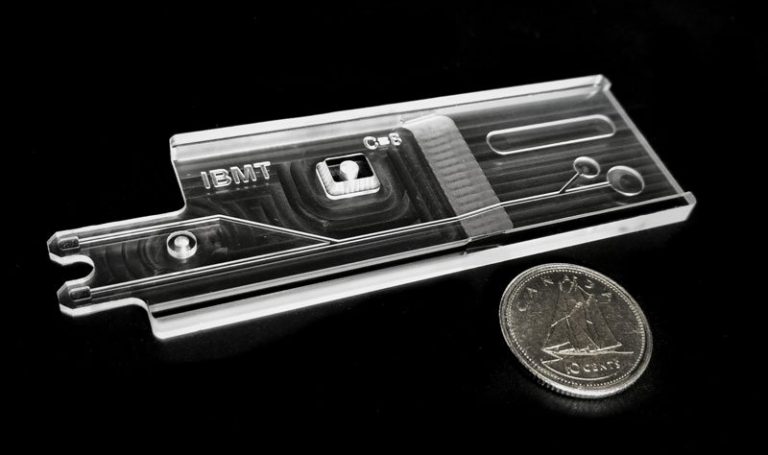As the technology used in medical research continues to shrink, so does the engineering surrounding it. Edmond Young, Ph.D., who is the director and supervisor at the Laboratory of Integrative Biology and Microengineered Technologies (IBMT) at the University of Toronto, focuses on developing technologies that rely on the flow of fluids at the microscale (a length scale of less than one millimeter – typically tens to hundreds of microns).
According to Young, “The microscale happens to be really useful in biomedical applications, where we can control and manipulate biological materials like DNA, proteins, living cells, and even mini-models of tissues that have microscale features.”
Young and his researchers manipulate fluid flow around these materials to study the behavior and functions of living cells within microengineered devices. “Which can be monitored and interrogated outside the body, while precisely modelling what happens inside the body.”
Young first learned about Tormach when he was working as a postdoctoral researcher at the University of Wisconsin-Madison, which is just down the road from Tormach’s headquarters in Waunakee, WI.
A Tormach PCNC 770 was one of the first pieces of equipment that Young picked up for the lab, when he established it, because it provided his team with the ability to “make plastic micro-engineered devices, containing these miniature channels where fluid flows, for a very affordable startup cost,” he explains. “We’ve had experience working with various microfabrication methods and different polymer materials to create these devices, but one area that has remained a major bottleneck in our field has been the high costs of bringing in fabrication infrastructure to make plastic micro-devices, and the long turnaround times for making microscale molds for traditional processes like injection molding and hot embossing.”
Young, and his team, realized that the Tormach offered the precision that they needed for working at the microscale.
“Given the combination of affordability, rapid turnaround times, and ease of setting up, it was an easy decision to incorporate the system into my lab’s plans when I moved to Toronto.”
They’ve been using various endmill sizes and shapes, ranging from 75-micron diameter to 1/32” (0.794 mm) and from square to ball to tapered endmills, to create 3D microscale features on plastic materials such as polystyrene, polymethylmethacrylate (PMMA, or acrylic), and cycle-olefin polymers (COP).
“What we’ve found is that the milling process does create some roughness on the microchannel surfaces, but that this roughness can be managed with optimal feed rates and spindle speeds. We are constantly working to improve our processes to increase precision and reduce unwanted roughness.”
While microscale milling is not unheard of in the realm of microfabrication, but it is not well known either. Young recently had a Tutorial Review published in the academic journal, Lab on a Chip, which is published by the Royal Society of Chemistry, discussing the value of micromilling.
According to the paper, “Micromilling is an alternative method that has the potential to address some of the challenges in microfabrication… Recent work has shown micromilling to be effective for microfluidic devices.” Though Young’s work is on a different scale and in an untraditional industry for milling, his Tormach has held its own against other microfabrication techniques, and proven to be a valuable resource in an integrative biology lab.


